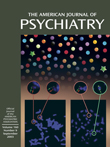Who Comes to Voluntary, Community-Based Alcohol Screening? Results of the First Annual National Alcohol Screening Day, 1999
Abstract
OBJECTIVE: The feasibility of the 1999 voluntary, community-based National Alcohol Screening Day (NASD) was assessed by determining 1) the extent to which community and college sites were registered to hold screenings and the extent to which the subjects came to participate, 2) the demographic and clinical characteristics of the participants at these screening sites, and 3) the extent to which individuals who were referred for evaluation and treatment adhered to follow-up recommendations. METHOD: Registered community and college sites were documented. Screening forms returned by the participants were analyzed. A subgroup of randomly selected participants from community and college sites was contacted by telephone. RESULTS: A total of 1,218 community sites and 499 college sites participated in NASD. At the 1,089 sites that reported results, 32,876 people participated, 18,043 were screened, and 5,959 were referred for treatment. Forty-three percent of those screened at these sites had a score of 8 or more on the Alcohol Use Disorders Identification Test (AUDIT), indicating harmful or hazardous drinking. Only 13% of those screened had previous alcohol treatment. In the subgroup that participated in the follow-up survey (N=704), community participants (N=337) had higher mean scores on the AUDIT than the college participants (N=337). Approximately 50% of the community participants and 20% of the college participants adhered to the recommendation to pursue follow-up. CONCLUSIONS: Voluntary, community-based screening for alcohol problems is feasible and offers education, screening, and referral for many individuals with harmful or hazardous drinking behavior.



